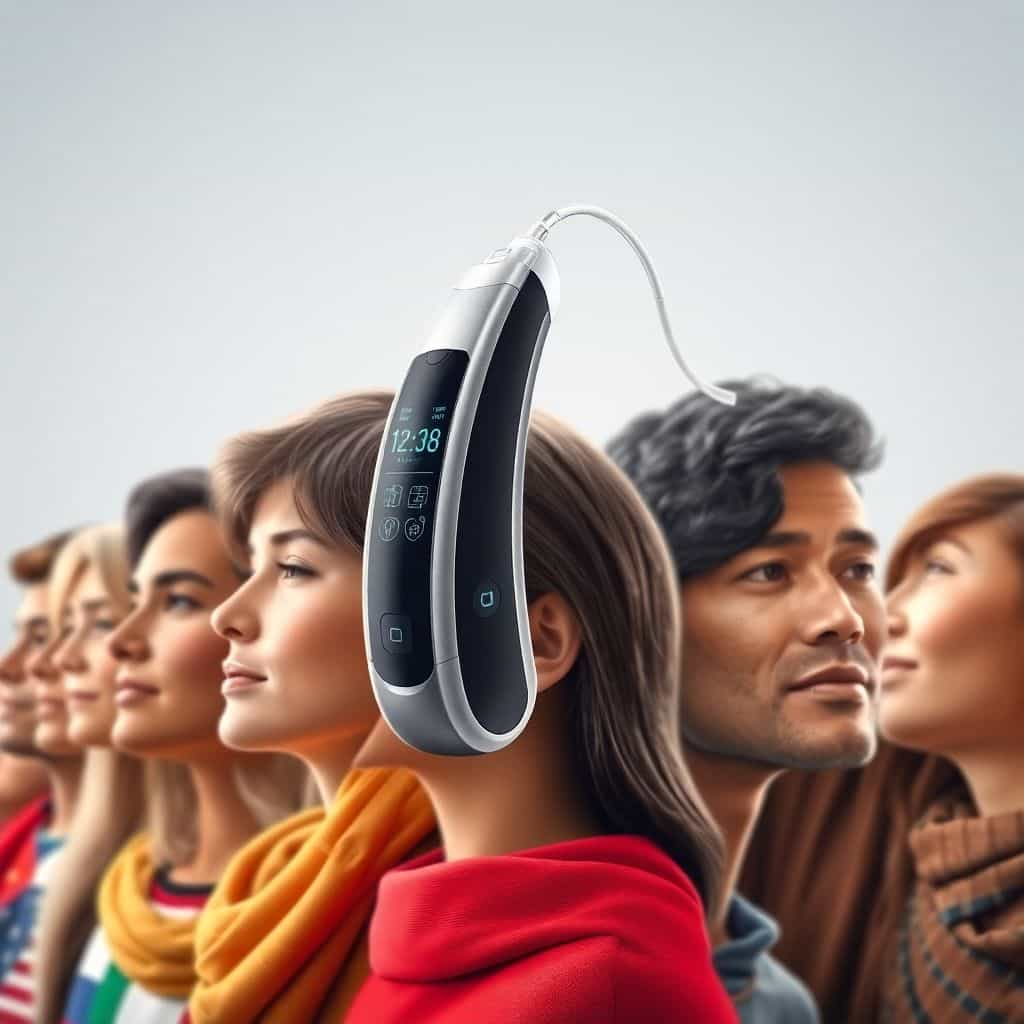Hearing aids have long been a lifeline for individuals with hearing impairments, evolving from bulky, conspicuous devices to sleek, technologically advanced systems that blend seamlessly into the lives of users. Today, external hearing aids are equipped with state-of-the-art features such as connectivity to smartphones, noise cancellation, and even artificial intelligence. These enhancements have not only improved auditory experiences but have also drastically altered public perceptions about hearing aid usage.
Historically, the concept of assisting hearing through external devices dates back centuries. Ear trumpets, for instance, were rudimentary devices used in the 17th century, designed to collect sound and funnel it into the ear. While they served a purpose, their effectiveness was limited. It wasn’t until the 20th century that electronic hearing aids began to emerge, with the advent of vacuum tubes and later, transistors, revolutionizing ear-level amplification.
In the modern era, digital technology has paved the way for sophisticated hearing aids that can be customized to the specific auditory needs of users. Brands like Phonak, Starkey, and Oticon lead the market with devices that offer compatibility with Bluetooth, allowing wearers to stream phone calls and music directly to their ears. This seamless integration with everyday devices has made wearing hearing aids less of a stigma and more of a lifestyle choice.
One of the notable innovations in external hearing aids is the introduction of smart hearing aids that employ artificial intelligence and machine learning. These devices can adapt to the user’s environment, adjusting volume and sound settings automatically based on noise patterns. Research at institutions like Northwestern University is focused on refining these technologies further, aiming for hearing aids that learn and predict user preferences over time.
The geographic distribution of hearing aid usage reveals intriguing patterns. In developed regions such as North America and Europe, the adoption rate is relatively high due to better healthcare access and higher awareness of hearing issues. According to a study by the Hearing Industries Association, about 12 to 15 percent of the population in these areas uses hearing aids. Contrastingly, in developing countries, the usage is significantly lower, often due to a lack of resources and social stigma.
Europe has made significant strides in the realm of hearing technology. Countries like Denmark and Switzerland are not only leading exporters of hearing devices but also pioneers in hearing aid research. The Danish company GN Hearing was among the first to introduce Made for iPhone hearing aids, setting a new standard for device compatibility. This integration has been a game-changer, particularly for tech-savvy users who appreciate the convenience of managing their hearing aids directly from their smartphones.
Meanwhile, Asia presents a mixed picture. While countries such as Japan and South Korea show high adoptive rates due to technological advancements and societal acceptance, other nations struggle with accessibility. In rural parts of India and China, cultural beliefs and limited access to healthcare services restrict wider adoption of hearing aids. Non-governmental organizations are therefore stepping in to bridge this gap, providing affordable solutions and education about hearing health.
Developments in nanotechnology and material science are expected to further enhance the functionality of external hearing aids. Research is underway to create miniature auditory devices that are both inconspicuous and powerful. Invisible hearing aids, which fit entirely within the ear canal, are a promising concept for those seeking a discreet option. Advances in battery technology, such as the use of rechargeable lithium-ion cells, are also extending the lifespan and convenience of these devices.
Clinical trials are testing the efficacy of bone conduction technology, which bypasses the outer ear to stimulate the cochlea directly through vibrations. This approach is particularly beneficial for individuals with chronic ear infections or outer ear deformities, offering them an innovative auditory solution. Oticon’s ‘Opn S’ model is among those pioneering this technology, marketed globally with positive early results.
A study by the World Health Organization highlights a growing demand for hearing aids worldwide, with an estimated 1.5 billion people expected to experience some form of hearing loss by 2050. This statistic underscores the importance of continuous innovation and research. Governments and NGOs around the globe are being urged to prioritize hearing health, investing in technology advancements and making hearing aids more accessible to underserved populations. The future of hearing aids not only lies in technological prowess but also in the equitable distribution of these life-changing devices.
You may also like
Elderly Care with Caregivers: Costs and Regional Variations
The landscape of elderly care is evolving, with caregivers becoming an integral part of the support system for the aging population. This article delves into the options, costs, and advantages of choosing caregivers for elderly care, and examines the geographical variations in this choice.
Elderly Care in Nursing Homes: Options, Costs and Regional Variations
The decision to opt for nursing home care involves evaluating numerous factors including options, costs, and regional differences. This article explores the complexities of elderly care in nursing homes, highlighting available services, financial considerations, and the impact of geographical location on these choices.
Invisible Hearing Aids: Current options
Internal hearing aids, also known as invisible hearing aids, are transforming the lives of individuals with hearing loss through advanced, discreet technology. This article explores current options, cutting-edge research, and regional usage trends in the hearing aid landscape.
Modern Dental Aligners: Emerging treatments and Research for children’s dental care
Dental aligners have revolutionized orthodontic treatment, providing a discreet and convenient alternative to traditional braces. This article examines current methods and treatments, focusing on challenges for children and insights from emerging research. Additionally, it assesses geographic trends in treatment incidence.
